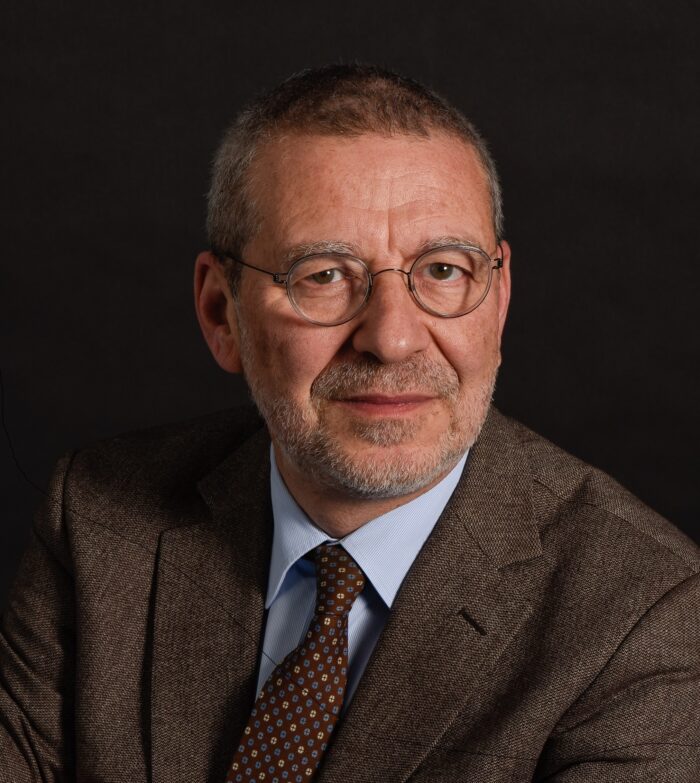Prof. Krestin joins Fluidda’s board of directors
INTRODUCTION
Gabriel Krestin received his MD from the University of Cologne, Germany where he also specialized in radiology, in 1981 and his PhD (Habilitation) in 1989. From 1990–1997, he worked at the University Hospital in Zürich/CH, including a period as acting chairman of the Department of Radiology. In 1997 he moved to Erasmus MC in Rotterdam, Netherlands where he was the Professor and Chairman of the Department of Radiology & Nuclear Medicine until his retirement end of 2021. Dr. Krestin is (co-)author of over 450 original articles, (co) author of more than 101 book chapters, and editor of 15 books. His main areas of research are imaging of abdominal organs and cardio-vascular diseases, molecular imaging and population imaging. Dr. Krestin is presently the Scientific Director of EIBIR (the European Institute of Biomedical Imaging Research) and a member of the NAM (National Academy of Medicine) in the US.
FRI SUPPORTS MOVE TO DATA-DRIVEN RESPIRATORY MEDICINE
Radiologists’ interpretation of images has traditionally been something of an art. Internationally recognized radiology expert and Fluidda board member Dr. Gabriel Krestin explains how Functional Respiratory Imaging (FRI) could turn this practice into a data-driven scientific practice for pulmonary radiology. Such a move would enable more reproducible assessments, guide the design of treatment plans, and improve the practice of respiratory medicine for physicians and their patients.
“Making image interpretation more reproducible, more quantitative, and more evidence-based is something that needs to happen,” states Krestin. Krestin is a clinician and researcher with 40 years of experience in medical imaging and analysis on the international stage. He led the Department of Radiology & Nuclear Medicine at Erasmus Medical Center for 25 years. Now, he serves on Fluidda’s board of directors to help implement his vision for data-driven medicine.
IMAGES AS DATA
Current image analysis in radiology leaves room for inconsistencies. “Images are actually gray shadows, and it is an art to interpret the gray shadows,” Krestin explains. “As a result, one could theoretically show the same image to three radiologists and receive a different interpretation from each.”
Krestin envisions something different. “I always wanted to move the radiological approach from an art to a science,” he says. Focusing on the quantitative information available in images can provide a key to unlocking this vision. As Krestin himself states, “Images are data.” They contain an incredible amount of not fully used information. Krestin was particularly impressed by the information that can be obtained through FRI. “As a radiologist, I like nice images. The beautiful 3-D colourful presentations that come with a quantification represented by different colours on a colour scale in FRI are very appealing to me. They enable a much more sophisticated, regional, differentiated, and quantitative view.”
TRANSITIONING INTO DAILY PRACTICE
FRI measures more parameters and provides more information than current standard pulmonary radiography. With this additional information, radiologists can make more precise and reproducible assessments. For example, it is possible to quantify diseases of the airways and at the same time disturbances in the blood flow. As such, FRI provides radiologists with the data needed to make more informed decisions. The widespread adoption of FRI could contribute to a personalized, data-driven approach to pulmonary healthcare. One of Krestin’s goals is to facilitate this data-driven approach into mainstream practice. “What I would like to achieve is to get acceptance for FRI,” says Krestin, “It is very high quality and a very good approach; however, it is still far away from routine practice. For daily practice, you need to be fully integrated in the radiologists’ workflow.”
Right now, the daily practice of respiratory medicine relies largely on a long-established approach: pulmonary functional tests. The six-minute walk test to assess aerobic capacity and endurance by measuring distance walked is one example. These tests are relatively simple to perform, and pulmonologists are currently comfortable making decisions about care based largely on the global information on lung functioning that the tests provide. To convince pulmonologists to make the switch to a sophisticated approach like FRI, they will need to be thoroughly convinced of the benefits that regional, detailed information on the lungs, airways and vessels, can provide. They will need to know what additional questions FRI can answer for them, and that the answers they get will add value above what they can extract from familiar, functional tests.
GAINING ACCEPTANCE
To date, awareness of the value of the information provided by FRI is higher in the clinical trial space, but not necessarily in the general respiratory medicine space. Some pulmonologists still haven’t heard of FRI and may not understand all the possibilities for its use. “As of today, neither pulmonologists nor radiologists see yet a practical benefit in providing all those measurements,” says Krestin in reference to FRI. It will likely take an increase in awareness of FRI and more research on the benefit of imaging biomarkers to change their minds and encourage the incorporation of FRI into regular practice.
There is already plenty of data that demonstrates at least some of what is possible through FRI. “One of the things that impressed me and led to my decision to engage with FLUIDDA is that they have already quite an impressive body of evidence for the added value of their solutions,” Krestin explains. Research involving FRI has resulted in more than 75 scientific publications to date. “You can see with those publications that there are definitely correlations between certain outcomes or severity of disease and the FRI measurements,” he added. “These findings show that there is added information that we can get from FRI.”
ANTICIPATED IMPACT
Based on his extensive experience in medical imaging and healthcare, Krestin has already started anticipating what future research may show regarding FRI’s role beyond clinical trials. “I saw the developments and the innovations that Fluidda made and how that could be used in daily practice,” Krestin states.
He doesn’t think FRI will affect disease detection or classification; these activities have now been done for over 100 years visually on radiographic images. Instead, he expects it to influence clinicians’ decision-making. “What FRI provides are some objective measurements that can assess the severity of a disease and the change of that severity during a certain treatment,” explains Krestin. With artificial intelligence, this data can be integrated with genetic, clinical, and environmental data to enable predictive analytics. “If we can crunch that data and apply sophisticated algorithms to integrate it and extract knowledge out, we will likely be able to better determine a diagnosis, choose a treatment, and predict outcome,” Krestin postulates. “That would be a big step forward into data-driven medicine.”
Krestin also expects that FRI will provide added value for patients. Patients already get diagnostic computerized tomography (CT) scans when recommended. Instead of adding an additional test, FRI would simply change the evaluation of these scans, providing more information along with a better way to visualize that information. “It will rarely lead to additional burden on the patient,” says Krestin when asked his thoughts on how patients might perceive the use of FRI in the daily practice of respiratory medicine. “It will be even easier to explain to the patient on the kind of quantitative, colorful 3D images that Fluidda provides why the physician will take a certain decision or will choose a certain treatment. It’s much easier to understand these colorful quantitative images than to understand the thousand different slices that today’s CT provides.” With FRI images, the patient would likely better comprehend the condition of their lungs and how their respiratory functioning improves over the course of the prescribed treatment.
A COMPETITIVE ADVANTAGE
Of course, FRI isn’t the only new quantitative respiratory imaging technology available as a potential asset to the regular practice of respiratory medicine. Other companies have developed their own technologies, many of which are aimed at detecting and providing volumetric measurements of pulmonary nodules. “Pulmonary nodules are a big topic, particularly with the advent of chest CT in high-risk patients for the early detection of lung cancer,” Krestin states. There are many patients at risk who need these lung cancer screening exams, and radiologists are having to conduct them on a large scale. It’s a lot of tedious work to look for these nodules manually. As a result, there is demand among radiologists for a technology that enables automated nodule detection and quantification. Such technologies give radiologists much more confidence in their assessments and make their work more efficient.
Fluidda’s technology isn’t yet aimed at lung nodule analysis. Instead, it offers similar enhanced analysis capabilities for other lung diseases that aren’t necessarily cancer – such as COPD and asthma – but are still very debilitating for patients. “Still, I think for the time being, Fluidda has definitely a competitive advantage through the fact that they provide quite a large number of biomarkers,” says Krestin. “There is no other competitor that has this whole scale of measurements of the respiratory tree, vessels, and different measures like over-inflation of the lungs and trapped air. One of the very special approaches that Fluidda has is using computational flow dynamics for the evaluation of the distribution of inhaled drugs and to see the air flow in the respiratory tract. This is something that is quite unique at this point in time.”
FUTURE DIRECTIONS
FRI has unique advantages to offer for research and clinical practice in pulmonary healthcare, but it will take some time to become fully integrated into daily practice. Krestin believes that Fluidda is on the right track. As he discusses moving from “the art of healing” to “the science of healing,” Krestin says, “It’s something that was one of my biggest goals for my professional life.”

Categorised in: Miscellaneous / April 7, 2022 4:12 pm /
Tags: Board, Directors, Krestin